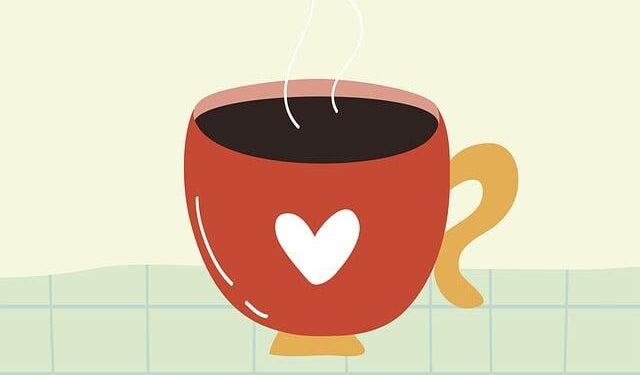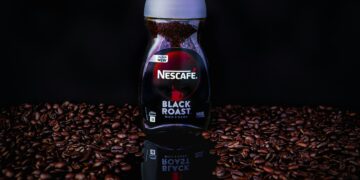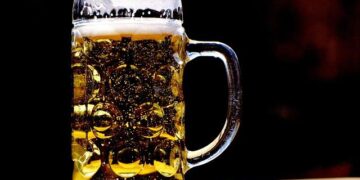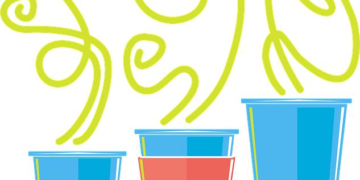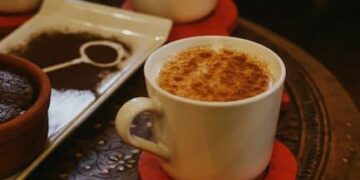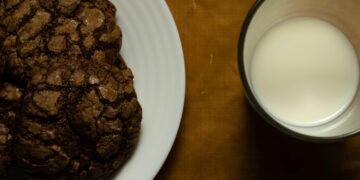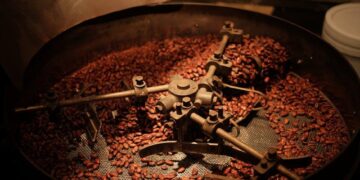Table of Contents
Introduction
The question “How much caffeine is in a 20 oz Dr. Pepper?” appears simple, but the answer unlocks a complex discussion at the intersection of consumer choice, nutritional science, and human physiology.
The caffeine content of a beverage is not merely a static number on a label; it represents an active pharmacological agent delivered within a matrix of other ingredients—primarily sugar or artificial sweeteners—that collectively impact the body.
Understanding this single data point in its full context requires a multi-faceted investigation.
This report will provide a definitive answer to the user’s query and expand upon it to deliver a holistic analysis.
We will quantify the caffeine in various Dr. Pepper formulations, contextualize this amount through rigorous comparison with other beverages, examine the synergistic effects of caffeine and its accompanying sweeteners, detail the physiological impact of caffeine consumption, and situate this information within the framework of established public health guidelines.
The report is structured to guide the reader from the specific data point to a broad, actionable understanding, empowering informed decisions about consumption.
Section 1: Quantifying Caffeine in Dr. Pepper Formulations
A precise and evidence-based examination of product information reveals a highly consistent caffeine content across the main Dr. Pepper product line available in the United States.
Minor discrepancies in reported values for smaller serving sizes resolve into a clear and reliable figure for the common 20 fl oz bottle.
Primary Finding for Regular and Diet Dr. Pepper
The most consistent and authoritative data indicates that a 20 fl oz bottle of both regular Dr. Pepper and Diet Dr. Pepper contains approximately 68 mg of caffeine.
This figure is directly supported by multiple, independent source types, lending it a high degree of confidence.
Manufacturer-provided product information from Keurig Dr. Pepper explicitly states “approx.
68mg caffeine” for a 20 fl oz bottle of Diet Dr. Pepper.1
Similarly, nutritional information on retailer websites, which reflects the product’s packaging, lists the caffeine content of regular Dr. Pepper as 68 mg per 20 fl oz bottle 2 and Diet Dr. Pepper as 68 mg per 20 fl oz bottle.3
This value is further corroborated through calculations based on the standard 12 oz can.
Several databases list a 12 oz serving of Dr. Pepper as containing either 41 mg 5 or 42 mg 6 of caffeine.
A pro-rata calculation based on the 41 mg figure (
41 mg/12 oz×20 oz) yields a value of 68.3 mg, which aligns almost perfectly with the stated 68 mg figure.
This consistency between direct reporting for the 20 oz size and calculations from the 12 oz size demonstrates a standardized caffeine concentration of approximately 3.4 mg/fl oz.
Caffeine Content in Dr. Pepper Zero Sugar
Contrary to a common consumer assumption that “Zero” might imply caffeine-free, Dr. Pepper Zero Sugar contains the same amount of caffeine as its regular and diet counterparts: approximately 68 mg per 20 fl oz bottle.
This is explicitly confirmed by the manufacturer’s official product facts page.8
This standardization is also reflected on retailer websites, which list the caffeine content at a rate of 41 mg per 12 fl oz 9, a concentration that equates to ~68 mg in a 20 oz serving.
The Canadian formulation of Dr. Pepper Zero Sugar also confirms the base rate of 41 mg per 355 mL (approximately 12 oz) serving.11
This consistent caffeine level across the primary product line—regular, diet, and zero sugar—suggests a deliberate product strategy by the manufacturer to deliver a uniform stimulant effect to consumers, regardless of their preference for caloric or non-caloric sweeteners.
Addressing Data Outliers and Product Variants
While the 68 mg figure is standard, consumers must remain vigilant, as formulations can and do vary.
One product listing for a “10 bold tasting calories” version of Dr. Pepper shows a significantly higher caffeine content of 84 mg per 20 fl oz.12
This outlier highlights a critical point: brand-level assumptions are insufficient.
Consumers should always check the label of the specific product they are purchasing, as specialty flavors, limited editions, or low-calorie variants may deviate from the standard caffeine content.
For instance, Dr. Pepper Cherry is listed as containing approximately 66 mg of caffeine per 20 fl oz, a negligible difference from the standard 68 mg.13
For those who enjoy the flavor profile but wish to avoid the stimulant entirely, the company produces Caffeine-Free Dr. Pepper and Caffeine-Free Diet Dr. Pepper 14, which serve as important alternatives.
The table below consolidates these findings, providing a clear reference for the caffeine content in common Dr. Pepper products.
| Product Name | Caffeine (mg per 20 fl oz) | Caffeine Concentration (mg/fl oz) | Primary Data Sources |
| Dr. Pepper (Regular) | 68 mg | 3.4 | 2 |
| Diet Dr. Pepper | 68 mg | 3.4 | 1 |
| Dr. Pepper Zero Sugar | 68 mg | 3.4 | 8 |
| Dr. Pepper Cherry | 66 mg | 3.3 | 13 |
| Dr. Pepper (Low-Calorie Variant) | 84 mg | 4.2 | 12 |
| Caffeine-Free Dr. Pepper | 0 mg | 0.0 | 14 |
Section 2: A Comparative Analysis of Caffeinated Beverages
The figure of 68 mg of caffeine is largely meaningless in isolation.
Its significance is revealed only through comparison.
By benchmarking Dr. Pepper against a wide array of other common beverages, a clear hierarchy of caffeine potency emerges, which can help consumers contextualize their intake and manage their consumption more effectively.
Dr. Pepper vs. Other Sodas
Within the soft drink category, Dr. Pepper’s 68 mg per 20 oz places it in a higher tier of caffeine content among major brands.
It contains slightly more caffeine than a 20 oz serving of Pepsi, which has 63 mg 6, and notably more than Coca-Cola Classic, which contains approximately 57 mg when calculated from its base of 34 mg per 12 oz can.17
Its caffeine level is comparable to that of Diet Coke, which ranges from 70 mg to 76 mg in a 20 oz bottle.6
However, Dr. Pepper is significantly less caffeinated than popular citrus-flavored sodas.
A 20 oz bottle of Mountain Dew contains 90 mg of caffeine, and a Vault soda of the same size contains 118 mg.6
At the other end of the spectrum, many popular soft drinks, including Sprite, Fanta, and most brands of root beer, are entirely caffeine-free.17
Dr. Pepper vs. Coffee
The comparison between soda and coffee is the most dramatic and serves to recalibrate common perceptions of what constitutes a “high-caffeine” drink.
A 20 oz Dr. Pepper, with its 68 mg of caffeine, contains only a small fraction of the caffeine found in an equivalent volume of coffee.
A standard 8 oz cup of brewed coffee contains between 95 mg and 200 mg of caffeine, depending on the bean, roast, and brew method.23
Extrapolating this to a 20 oz serving, a coffee of that size could contain anywhere from 238 mg to 500 mg of caffeine.
This means a 20 oz coffee can deliver roughly 3.5 to 7 times more caffeine than a 20 oz Dr. Pepper.
This stark difference is explicitly highlighted in one analysis which compares the 68 mg in Dr. Pepper to an estimated 227 mg in a 20 oz coffee.7
Dr. Pepper vs. Tea
Tea generally occupies a middle ground between soda and coffee.
An 8 oz cup of brewed black tea contains approximately 47 mg to 50 mg of caffeine.21
Therefore, a 20 oz serving of black tea would contain around 118 mg to 125 mg of caffeine, which is significantly more than a Dr. Pepper.
Green tea has a similar, though often slightly lower, caffeine content than black tea.24
Dr. Pepper vs. Energy Drinks
Energy drinks represent another distinct tier of caffeine potency.
A standard 8.4 oz can of Red Bull contains 80 mg of caffeine—more caffeine than a 20 oz Dr. Pepper in less than half the volume.27
Larger energy drinks are even more potent; a 16 oz can of Monster Energy contains 160 mg of caffeine.27
High-performance energy drinks like Fast Twitch pack 200 mg of caffeine into just a 12 oz can 28, further illustrating the vast gap between the stimulant load of sodas and that of dedicated energy products.
The following table provides a comprehensive, at-a-glance reference that allows for a visual contextualization of Dr. Pepper’s caffeine content.
By normalizing values to a caffeine concentration (mg/fl oz), it enables a fair comparison across different serving sizes and reveals the true potency of each beverage type.
| Beverage Category | Beverage Name | Typical Serving Size (fl oz) | Total Caffeine (mg) | Caffeine Concentration (mg/fl oz) |
| Pepper Sodas | Dr. Pepper (Regular/Diet/Zero) | 20 | 68 | 3.4 |
| Pibb Xtra | 20 | 68 | 3.4 | |
| Colas | Pepsi | 20 | 63 | 3.2 |
| Coca-Cola Classic | 12 | 34 | 2.8 | |
| Diet Coke | 20 | 76 | 3.8 | |
| Citrus Sodas | Mountain Dew | 20 | 90 | 4.5 |
| Mello Yello | 12 | 53 | 4.4 | |
| Tea | Black Tea, brewed | 8 | 47 | 5.9 |
| Green Tea, brewed | 8 | 29 | 3.6 | |
| Coffee | Coffee, brewed | 8 | 96 | 12.0 |
| Espresso | 1 | 63 | 63.0 | |
| Energy Drinks | Red Bull | 8.4 | 80 | 9.5 |
| Monster Energy | 16 | 160 | 10.0 | |
| Fast Twitch | 12 | 200 | 16.7 |
This comparative analysis reveals that the term “caffeinated beverage” is overly broad and can be misleading.
A clear stratification of caffeine potency exists, with traditional sodas like Dr. Pepper occupying a relatively low tier compared to the much higher concentrations found in coffee and energy drinks.
Public health messaging and personal caffeine management should account for this stratification.
Advising an individual to “cut back on caffeine” is less precise and actionable than advising them to, for example, substitute one daily coffee for one soda, which would represent a significant reduction in intake.
Conversely, substituting one soda for another may have a negligible effect on total caffeine consumption.
This nuanced understanding of beverage categories is a key takeaway for any consumer seeking to manage their stimulant intake.
Section 3: The Synergy of Stimulants and Sweeteners: A Nutritional Profile
While the focus of the initial query is caffeine, a comprehensive analysis of Dr. Pepper’s health impact must extend to its full nutritional profile.
The data reveals that the primary health narrative for this beverage should not be centered on its moderate caffeine content, but rather on its role as a delivery system for either a massive dose of sugar or a combination of artificial sweeteners.
The choice between these formulations represents a significant nutritional trade-off.
The Sugar Load in Regular Dr. Pepper
A 20 fl oz bottle of regular Dr. Pepper contains a substantial amount of sugar, listed as 65 grams to 66 grams per serving.2
This sugar is primarily in the form of High Fructose Corn Syrup.7
To put this quantity into perspective, the U.S. Food and Drug Administration (FDA) uses a 2,000-calorie diet as the basis for its Daily Value (DV) recommendations.
A single 20 oz bottle of Dr. Pepper provides 129% to 130% of the DV for added sugars.30
The American Heart Association provides even stricter guidelines, recommending a daily limit of 36 grams of added sugar for men and 25 grams for women.32
By this measure, one bottle of regular Dr. Pepper contains nearly double the recommended daily sugar intake for a woman and significantly exceeds the limit for a man.
This sugar load is the source of the beverage’s approximately 240 to 250 calories.2
The Artificial Sweeteners in Diet and Zero Sugar Dr. Pepper
To achieve their zero-calorie and zero-sugar status, Diet Dr. Pepper and Dr. Pepper Zero Sugar replace high fructose corn syrup with non-nutritive, high-intensity artificial sweeteners.
The primary sweeteners used in these formulations are Aspartame and Acesulfame Potassium (Ace-K).11
While these sweeteners are approved by regulatory bodies and are effective for reducing caloric intake, they are the subject of ongoing scientific and public debate.
Some research has linked aspartame to headaches in susceptible individuals.33
In 2023, the International Agency for Research on Cancer (IARC), an agency of the World Health Organization, classified aspartame as “possibly carcinogenic to humans,” though other regulatory bodies like the FDA maintain its safety at current acceptable daily intake levels.33
Separately, some studies suggest that sweeteners like Ace-K may have an impact on gut bacteria and insulin response.33
This introduces a complex risk-benefit calculation for consumers choosing between a high dose of sugar and a cocktail of chemical sweeteners.
The Psychology of “Zero”
Marketing language plays a significant role in consumer perception.
The term “Zero” on a label refers specifically and exclusively to sugar and, by extension, calories.
However, this labeling can create a “health halo” effect, leading some consumers to subconsciously believe the product is also free from other ingredients of concern, such as caffeine, artificial colors, or preservatives.33
For example, Dr. Pepper contains Caramel Color, a substance that in some manufacturing processes can create the byproduct 4-methylimidazole (4-MEI), which has been identified as a possible carcinogen.33
The confusion is evident in online discussions where some users incorrectly assume Dr. Pepper Zero Sugar is caffeine-free.35
This underscores the importance of reading the full ingredient list rather than relying on marketing terms.
The following table starkly contrasts the nutritional trade-offs between the different Dr. Pepper formulations, demonstrating that while the caffeine content is constant, the caloric and sweetener load is the critical variable.
| Product Name | Calories | Total Sugars (g) | % Daily Value Added Sugars | Caffeine (mg) | Primary Sweetener(s) |
| Dr. Pepper (Regular) | 240 | 65g | 130% | 68 | High Fructose Corn Syrup |
| Diet Dr. Pepper | 0 | 0g | 0% | 68 | Aspartame, Acesulfame Potassium |
| Dr. Pepper Zero Sugar | 0 | 0g | 0% | 68 | Aspartame, Acesulfame Potassium |
Ultimately, a consumer focused solely on the 68 mg of caffeine is missing the larger and more impactful nutritional story.
The health consequences of chronically high sugar intake are well-documented and include increased risks of obesity, type 2 diabetes, and cardiovascular disease.
The long-term effects of artificial sweeteners remain a subject of debate.
Therefore, the most critical decision a consumer makes when selecting a Dr. Pepper is not about the stimulant, but about the sweetener.
Section 4: The Pharmacological Impact of Caffeine on Human Physiology
Caffeine is the most widely consumed psychoactive drug in the world.
Its effects are systemic, influencing nearly every major organ system.
Understanding its pharmacology—how it is absorbed, how it works, and how it affects the body—is essential for contextualizing the 68 mg dose present in a 20 oz Dr. Pepper.
Absorption, Metabolism, and Mechanism of Action
Upon consumption, caffeine is rapidly and completely absorbed from the gastrointestinal tract, with plasma concentrations typically peaking between 15 and 120 minutes after ingestion.36
It is then distributed throughout the body’s water, easily crossing the blood-brain barrier to exert its effects on the central nervous system.36
Caffeine is metabolized almost entirely in the liver by a specific enzyme, cytochrome P450 1A2 (CYP1A2).36
This process breaks caffeine down into several active metabolites, the most significant of which is paraxanthine.
These metabolites share many of caffeine’s physiological effects.36
The primary mechanism of action for caffeine’s stimulant effects is its role as an antagonist of adenosine receptors in the brain.36
Adenosine is an inhibitory neurotransmitter that builds up throughout the day, promoting drowsiness and sleep.
Caffeine has a molecular structure similar to adenosine, allowing it to bind to adenosine receptors without activating them, effectively blocking adenosine’s sleep-inducing signal.36
This blockade leads to increased neuronal firing and indirectly enhances the release of other excitatory neurotransmitters like dopamine and norepinephrine, which contribute to the feelings of alertness, improved mood, and enhanced focus.36
Systemic Effects of Caffeine
Caffeine’s influence extends far beyond simple wakefulness.
- Central Nervous System (CNS): The most well-known effects are increased alertness, reduced fatigue, and improved concentration and memory.38 However, at higher doses or in sensitive individuals, these benefits can give way to negative effects such as anxiety, restlessness, jitteriness, and insomnia.38 Regular consumption leads to tolerance, where the body adapts to the presence of caffeine. If a regular user abruptly stops their intake, they can experience withdrawal, a recognized condition characterized by symptoms like headaches, fatigue, irritability, and difficulty concentrating.38
- Cardiovascular System: Caffeine can cause a temporary, acute increase in heart rate and blood pressure.38 This is thought to be caused by either blocking hormones that keep arteries widened or by stimulating the release of adrenaline.38 For most healthy individuals with moderate intake, this effect is transient and not associated with long-term harm. However, individuals with pre-existing hypertension or certain heart conditions should consult a healthcare professional about safe consumption levels.39
- Digestive and Excretory Systems: Caffeine can increase the production of stomach acid, which may exacerbate symptoms of heartburn or ulcers in some people.39 It also acts as a mild diuretic, which can increase the frequency of urination.38 This effect is generally minor and unlikely to cause dehydration in healthy individuals with moderate consumption, and it tends to diminish with regular use as tolerance develops.38
- Skeletal and Muscular Systems: Extremely high, chronic intake of caffeine may interfere with the body’s ability to absorb and metabolize calcium, which could contribute to bone thinning (osteoporosis) over the long term.39 Conversely, caffeine has been shown to enhance athletic performance, helping to decrease muscle pain during endurance activities and aid in post-workout recovery by promoting the replenishment of glycogen, the muscles’ stored fuel source.38
The physiological response to a given dose of caffeine is not uniform across the population.
Individual responses are highly variable, influenced by both genetic predispositions and developed tolerance.
Genetic variations in the CYP1A2 gene, which codes for the primary caffeine-metabolizing enzyme in the liver, lead to some individuals being “fast metabolizers” and others being “slow metabolizers”.36
A slow metabolizer will experience stronger and longer-lasting effects from the same 68 mg dose of caffeine than a fast metabolizer.
Furthermore, an individual who consumes caffeine daily will develop a tolerance and experience a blunted response compared to an infrequent user.40
Therefore, a single, objective number like “68 mg” will have vastly different subjective and physiological consequences depending on the individual.
This makes it impossible to issue a one-size-fits-all verdict on whether 68 mg is “a lot.” The most prudent advice is for individuals to self-monitor for unwanted effects like jitteriness or sleep disruption and adjust their consumption accordingly, recognizing that their personal experience is a valid and important data point.42
Section 5: Public Health Guidelines and Recommendations for Caffeine Consumption
To translate the scientific data on caffeine into practical advice, public health organizations and medical bodies have established recommended daily intake limits for various populations.
Placing the 68 mg of caffeine in a 20 oz Dr. Pepper within the context of these guidelines reveals its relative significance for different age groups and health statuses.
Recommended Limits for Different Populations
- Healthy Adults: The U.S. Food and Drug Administration (FDA), the Mayo Clinic, and other health authorities generally cite 400 mg of caffeine per day as an amount not typically associated with dangerous, negative effects for most healthy adults.25 A single 20 oz Dr. Pepper, containing 68 mg of caffeine, represents
17% of this daily guideline. - Adolescents (Ages 12-18): For teenagers, whose bodies and brains are still developing, medical organizations recommend a much lower limit of less than 100 mg of caffeine per day.44 For this age group, a single 20 oz Dr. Pepper is a far more significant contributor to their daily intake. Its 68 mg of caffeine constitutes
68% of the recommended daily maximum, meaning one beverage can account for over two-thirds of their safe daily limit. - Children (Under 12): The American Academy of Pediatrics and other medical experts advise against the consumption of caffeine and other stimulants by children under the age of 12.42
- Pregnant Individuals: Due to caffeine’s ability to cross the placenta and affect the fetus, the American College of Obstetricians and Gynecologists (ACOG) recommends that pregnant individuals limit their caffeine intake to 200 mg per day.39 Some studies have suggested that even lower amounts may be associated with increased risks of pregnancy loss or slowed fetal growth, prompting a cautious approach.25 A 20 oz Dr. Pepper (68 mg) represents
34% of the 200 mg ACOG limit.
The Critical Importance of Cumulative Intake
It is crucial to emphasize that these daily limits apply to caffeine consumed from all sources throughout the day.33
Caffeine is found not only in beverages like coffee, tea, and soda, but also in chocolate, some over-the-counter pain relievers, and pre-workout supplements.22
A consumer who has a cup of coffee in the morning, an iced tea in the afternoon, and a 20 oz Dr. Pepper with dinner could easily exceed the recommended daily threshold, especially if they are an adolescent or a pregnant woman.
The following table provides a clear, actionable summary of these guidelines by showing not just the recommended limits, but also what percentage of that limit a single 20 oz Dr. Pepper represents for each demographic group.
This translation of abstract data into a personal risk calculation makes the information more tangible and impactful.
| Demographic Group | Recommended Daily Caffeine Limit (mg) | A 20 oz Dr. Pepper (68 mg) as % of Daily Limit |
| Healthy Adult | 400 mg | 17% |
| Adolescent (12-18) | 100 mg | 68% |
| Pregnant Individual | 200 mg | 34% |
| Child (<12) | Not Recommended | N/A |
Section 6: The Role and Rationale of Caffeine in Modern Beverages
The final piece of this comprehensive analysis addresses the fundamental question: why is caffeine added to soft drinks like Dr. Pepper in the first place? The answer involves a complex interplay of history, industrial chemistry, regulatory positioning, and consumer psychology.
Historical Origins and the Flavor Justification
The practice of caffeinating soft drinks has historical roots.
Early cola formulations in the late 19th century were made using extract from the kola nut, a plant that naturally contains caffeine.51
The caffeine, along with other compounds in the nut, contributed a bitter note to the flavor profile that helped balance the drink’s sweetness, creating a unique and popular taste.51
Today, modern soft drink production no longer relies on significant amounts of kola nut extract.53
Instead, caffeine is typically added as a separate ingredient, often produced synthetically or extracted from coffee beans.53
Despite this change in production, soft drink manufacturers maintain the historical rationale.
Their official justification, provided to regulatory agencies and the public, is that caffeine is added as a
flavoring agent.52
They argue that its subtle bitterness is an essential component of the complex flavor profile of their beverages, a claim made by both Coca-Cola and PepsiCo.19
A Scientific Challenge to the Flavor Argument
This long-standing industry claim has been directly challenged by scientific research.
A pivotal double-blind, crossover study published in the Archives of Family Medicine investigated whether regular consumers could actually taste the caffeine in cola beverages.57
The study used a sensitive flavor-detection procedure to test whether participants could distinguish between caffeinated and caffeine-free colas across a wide range of caffeine concentrations.
The results were striking.
At the concentration typically found in most cola soft drinks (approximately 0.1 mg/mL), the mean percentage of correct identifications was at chance levels (53%).
Only 2 of the 25 participants (8%) were able to reliably detect a flavor difference.57
This finding directly contradicts the claim that caffeine plays an integral and perceptible role in the flavor of these drinks for the vast majority of consumers.
An Alternative Rationale: The Pharmacological Hook
If most people cannot taste the caffeine, its continued inclusion demands an alternative explanation.
The conclusion offered by the researchers of the flavor study is that the high rates of consumption of caffeinated soft drinks are more likely a reflection of caffeine’s known effects as a central nervous system-active drug than its subtle effects on flavor.57
This points to a powerful commercial incentive.
Caffeine is a mood-altering and physical dependence-producing substance.41
By including a pharmacologically active ingredient, manufacturers may be encouraging habitual consumption and brand loyalty.
The consumer may not be choosing the product for its taste, but for the mild stimulant “lift” it provides or, in the case of a regular user, to avoid the mild withdrawal symptoms (such as headaches or fatigue) they might experience if they were to switch to a caffeine-free alternative.
This suggests that caffeine’s primary role in many modern soft drinks may not be as a flavoring agent, but as a “pharmacological hook” that drives repeat purchasing behavior.
Conclusion: An Informed Approach to Consumption
In summary, a 20 fl oz bottle of standard Dr. Pepper—whether regular, diet, or zero sugar—contains approximately 68 mg of caffeine.
This amount is moderate when compared to the high levels found in coffee, energy drinks, and even black tea, but it resides on the higher end of the spectrum for traditional cola and pepper-style sodas.
For a healthy adult, this represents a modest 17% of the recommended daily 400 mg limit.
However, for an adolescent, it constitutes a substantial 68% of their much lower 100 mg daily guideline, making it a significant dietary consideration for that age group.
The primary conclusion of this comprehensive analysis, however, is that while the caffeine content prompted the initial query, it is not the most significant health variable in the product.
The more critical story lies in the beverage’s function as a delivery system for sweeteners.
The regular version of Dr. Pepper delivers an excessive 65-gram dose of sugar, more than the entire recommended daily value for added sugars in a single serving.
The diet and zero-sugar versions, while eliminating sugar and calories, deliver a combination of artificial sweeteners, namely aspartame and acesulfame potassium, which are the subject of ongoing health debates.
Ultimately, the decision to consume a Dr. Pepper should be an informed one, based not just on its moderate caffeine load but on its entire nutritional profile.
This choice must be viewed within the context of one’s total daily intake of caffeine and sugar from all sources, and with an awareness of one’s own physiological sensitivity and personal health status.
This report provides the comprehensive data necessary for the consumer to make a choice that aligns with their individual health goals and circumstances.
Works cited
- Diet Dr Pepper® 20 fl oz – Product Facts, accessed August 2, 2025, https://www.kdpproductfacts.com/product/a0e3h000003LK0FAAW/diet-dr-pepper-20-fl-oz-us
- Dr Pepper Soda 20 Oz | Shop | Food Depot BGreen, accessed August 2, 2025, https://shop.fooddepotonline.com/shop/dr_pepper_soda_20_oz/p/2408013
- www.publix.com, accessed August 2, 2025, https://www.publix.com/pd/dr-pepper-soda-diet/RIO-PCI-128185#:~:text=Product%20details%200%20calories%20per,Est.
- Dr Pepper Soda, Diet | Publix Super Markets, accessed August 2, 2025, https://www.publix.com/pd/dr-pepper-soda-diet/RIO-PCI-128185
- Coffee, Tea, Soft Drinks — Caffeine Content – Math.Utah.Edu, accessed August 2, 2025, https://www.math.utah.edu/~yplee/fun/caffeine.html
- Caffeine Content of Energy Drinks and Other Beverages – iMOM, accessed August 2, 2025, https://www.imom.com/caffeine-content-of-energy-drinks-and-other-beverages/
- How Much Caffeine Is in Dr. Pepper? 2025 Breakdown | Corner Coffee Store, accessed August 2, 2025, https://cornercoffeestore.com/how-much-caffeine-is-in-dr-pepper/
- Dr Pepper® Zero Sugar 20 fl oz – Product Facts, accessed August 2, 2025, https://www.kdpproductfacts.com/product/a0e3h000003LK0dAAG/dr-pepper-zero-sugar-20-fl-oz-us
- Dr Pepper Zero Sugar Soda, Bottle, 20 Ounces – Winn Dixie, accessed August 2, 2025, https://shop.winndixie.com/shop/product/dr-pepper-zero-sugar-soda-bottle-20-ounces/2560856
- Dr Pepper, Soda, Zero Sugar, Blackberry (12 count) | Shop – Weis Markets, accessed August 2, 2025, https://www.weismarkets.com/shop/product/dr-pepper-soda-zero-sugar-blackberry/3617508
- Zero Sugar | Dr Pepper Canada, accessed August 2, 2025, https://www.drpepper.ca/en/products/zero-sugar/
- About Us – 14th St – Dr Pepper Soda, 20 Fl Oz (1.25 Pt) 591 Ml – Acapulco Tropical, accessed August 2, 2025, https://shop.acapulcotropicalsupermarket.com/online/14thst/pages/aboutus?pid=ec38b2da-9973-4534-966a-aede01745212&productName=dr-pepper-soda
- Dr Pepper® Cherry Flavored Soda 20 fl oz – Product Facts, accessed August 2, 2025, https://www.kdpproductfacts.com/product/a0e3h000003LJzzAAG/dr-pepper-cherry-flavored-soda-20-fl-oz-us
- Caffeine Free Diet Dr Pepper, accessed August 2, 2025, https://www.drpepper.com/s/products/caffeine-free-diet-dr-pepper-MCNLF4AK3EKBARXOJVTWR5YJ6BGY
- Dr Pepper Zero Sugar, accessed August 2, 2025, https://www.drpepper.com/s/products/dr-pepper-zero-sugar-MCIFTMPB4IMVBUXCOVAKFBAY4ARQ
- The Facts About Your Favorite Foods and Beverages (U.S.) | Home, accessed August 2, 2025, https://www.pepsicoproductfacts.com/
- Ingredients – The Coca-Cola Company, accessed August 2, 2025, https://www.coca-colacompany.com/about-us/faq/ingredients
- How Much Caffeine Is in a Can of Coke and Diet Coke? – CAFELY, accessed August 2, 2025, https://cafely.com/blogs/info/caffeine-in-coke
- How Much Caffeine Is In Coca Cola (Coke)? 2025 Breakdown | Corner Coffee Store, accessed August 2, 2025, https://cornercoffeestore.com/how-much-caffeine-in-coke/
- DIET COKE HAS MORE CAFFEINE THAN PEPSI ZERO AND DIET COKE (not saying it’s better stating facts) – Reddit, accessed August 2, 2025, https://www.reddit.com/r/Pepsi/comments/zw2xuh/diet_coke_has_more_caffeine_than_pepsi_zero_and/
- Does Diet Dr. Pepper Have Caffeine? Here’s the Facts – Pzaz® Breath Spray, accessed August 2, 2025, https://pzaz.com/blogs/research/does-diet-dr-pepper-have-caffeine
- Caffeine content for coffee, tea, soda and more – Mayo Clinic, accessed August 2, 2025, https://www.mayoclinic.org/healthy-lifestyle/nutrition-and-healthy-eating/in-depth/caffeine/art-20049372
- Caffeine in Coffee vs Black Tea – A Primer – The Whistling Kettle, accessed August 2, 2025, https://www.thewhistlingkettle.com/blogs/tea/caffeine-in-coffee-versus-black-tea
- Caffeine in Tea vs. Coffee: How Do They Compare? – Healthline, accessed August 2, 2025, https://www.healthline.com/nutrition/caffeine-in-tea-vs-coffee
- Caffeine: Benefits, risks, and effects – Medical News Today, accessed August 2, 2025, https://www.medicalnewstoday.com/articles/285194
- Coffee vs. Tea: How Much Caffeine Is in Your Cup? – Tiny Footprint Coffee, accessed August 2, 2025, https://www.tinyfootprintcoffee.com/blogs/coffee/how-much-caffeine-in-coffee-vs-tea
- Caffeine Content for some of the Most Popular Drinks Revealed – ViDrate, accessed August 2, 2025, https://www.vidrate.com/blogs/news/caffeine-content-for-some-of-the-most-popular-drinks-revealed
- The Facts About Your Favorite Foods and Beverages (U.S.) | Caffeine, accessed August 2, 2025, https://www.pepsicoproductfacts.com/home/caffeine
- Dr Pepper Soda Bottle – 20 Fl. Oz. – carrsqc, accessed August 2, 2025, https://www.carrsqc.com/shop/product-details.208050662.html
- Dr Pepper® Soda Bottle, 20 fl oz – Kroger, accessed August 2, 2025, https://www.kroger.com/p/dr-pepper-soda-bottle/0007800008240
- Calories in Dr Pepper 20 Fl Oz Bottle by Dr. Pepper and Nutrition Facts – MyNetDiary, accessed August 2, 2025, https://www.mynetdiary.com/food/calories-in-dr-pepper-20-fl-oz-bottle-by-dr-pepper-bottle-7624446-0.html
- How Much Sugar is in Dr. Pepper? Sugar Content Across Regular and Diet – Oobli, accessed August 2, 2025, https://oobli.com/blogs/news/how-much-sugar-is-in-dr-pepper
- Does Dr Pepper Zero Have Caffeine or Is It Really a Clean Sip? – The Environmental Blog, accessed August 2, 2025, https://www.theenvironmentalblog.org/2025/07/does-dr-pepper-zero-have-caffeine/
- Every Diet Dr Pepper and Dr Pepper Zero flavor taste test – Tales of the Flowers, accessed August 2, 2025, https://www.flowerstales.com/2025/02/every-diet-dr-pepper-and-dr-pepper-zero.html
- No more dr.pepper for me 🙁 : r/DrPepper – Reddit, accessed August 2, 2025, https://www.reddit.com/r/DrPepper/comments/1buycc9/no_more_drpepper_for_me/
- Pharmacology of Caffeine – Caffeine for the Sustainment of Mental Task Performance – NCBI, accessed August 2, 2025, https://www.ncbi.nlm.nih.gov/books/NBK223808/
- Caffeine: What It Is, Benefits and Side Effects – Cleveland Clinic Health Essentials, accessed August 2, 2025, https://health.clevelandclinic.org/caffeine
- How Caffeine Affects Your Body – WebMD, accessed August 2, 2025, https://www.webmd.com/diet/ss/slideshow-how-caffeine-affects-your-body
- The Effects of Caffeine on Your Body – Healthline, accessed August 2, 2025, https://www.healthline.com/health/caffeine-effects-on-body
- www.betterhealth.vic.gov.au, accessed August 2, 2025, https://www.betterhealth.vic.gov.au/health/healthyliving/caffeine#:~:text=In%20small%20doses%2C%20caffeine%20can,to%20achieve%20the%20same%20effect.
- Caffeine | Better Health Channel, accessed August 2, 2025, https://www.betterhealth.vic.gov.au/health/healthyliving/caffeine
- Caffeine: How much is too much? – Mayo Clinic, accessed August 2, 2025, https://www.mayoclinic.org/healthy-lifestyle/nutrition-and-healthy-eating/in-depth/caffeine/art-20045678
- Spilling the Beans: How Much Caffeine is Too Much? | FDA, accessed August 2, 2025, https://www.fda.gov/consumers/consumer-updates/spilling-beans-how-much-caffeine-too-much
- How Much Caffeine is Safe for You and Your Child – MedStar Health, accessed August 2, 2025, https://www.medstarhealth.org/blog/caffeine-energy-drinks-heart-safety
- Caffeine: Benefits, Drawbacks, and Uses – HelpGuide.org, accessed August 2, 2025, https://www.helpguide.org/mental-health/wellbeing/how-much-caffeine
- Caffeine Overdose: Symptoms, Treatment & Side Effects – Cleveland Clinic, accessed August 2, 2025, https://my.clevelandclinic.org/health/diseases/caffeine-overdose
- What Is Caffeine, and Is It Good or Bad for Health? – Healthline, accessed August 2, 2025, https://www.healthline.com/nutrition/what-is-caffeine
- This Should Perk You Up: The Surprising Health Benefits of Coffee, accessed August 2, 2025, https://health.clevelandclinic.org/the-health-benefits-of-coffee
- Can you Drink Too Much Coffee? – Cleveland Clinic Newsroom, accessed August 2, 2025, https://newsroom.clevelandclinic.org/2025/04/09/can-you-drink-too-much-coffee
- How To Quit Caffeine Without a Headache – Cleveland Clinic Health Essentials, accessed August 2, 2025, https://health.clevelandclinic.org/how-to-quit-caffeine
- ELI5 Why does coke/pepsi have caffeine? : r/explainlikeimfive – Reddit, accessed August 2, 2025, https://www.reddit.com/r/explainlikeimfive/comments/1bwrc8m/eli5_why_does_cokepepsi_have_caffeine/
- How Much Caffeine Is in a Can of Coke Compared to Coffee? – MedicineNet, accessed August 2, 2025, https://www.medicinenet.com/how_much_caffeine_is_in_coke_compared_to_coffee/article.htm
- ELI5: How do soda companies put caffeine in their products? What does it come from? – Reddit, accessed August 2, 2025, https://www.reddit.com/r/explainlikeimfive/comments/eqa2jl/eli5_how_do_soda_companies_put_caffeine_in_their/
- www.medicinenet.com, accessed August 2, 2025, https://www.medicinenet.com/how_much_caffeine_is_in_coke_compared_to_coffee/article.htm#:~:text=Caffeine%20was%20proposed%20to%20be,is%20not%20harmful%20to%20health.
- How much caffeine is in your products? Is it safe? | Contact Pepsi – Sign Up – PepsiCo, accessed August 2, 2025, https://contact.pepsico.com/pepsi/article/how-much-caffeine-is-in-your-products-is-it-safe(popup:open/signup)
- Why is soda caffeinated? – Viter Energy, accessed August 2, 2025, https://www.goviter.com/blogs/viter-energy-blog/why-is-soda-caffeinated
- Is caffeine a flavoring agent in cola soft drinks? – PubMed, accessed August 2, 2025, https://pubmed.ncbi.nlm.nih.gov/10927712/
